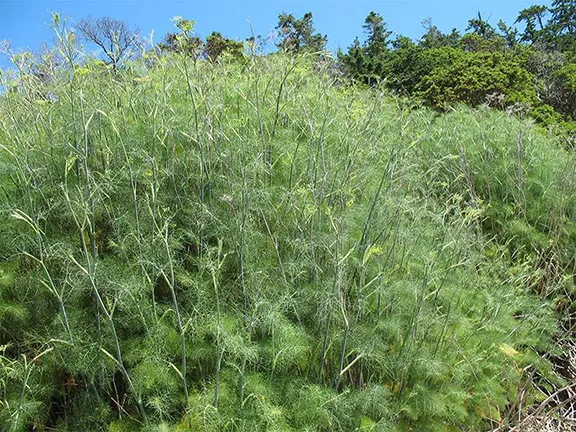Growing horseradish, ginger, turmeric, chives and other perennial herbs in an organic garden in Andalucia
By Nick Nutter | Updated 30 Sep 2022 | Andalucia | Organic Garden |
Login to add to YOUR Favourites or Read Later


Ginger
Perennial herbs are those that, once established, continue producing for years. Unlike the shrubby herbs we looked at last month, most perennials are easily grown from seed with four exceptions, horseradish, mint, ginger and turmeric. All the perennials can be grown in pots.


Horseradish
I love horseradish which is just as well because once you have horseradish growing, you have it for life so be careful where you plant it. From a 1 cm root cutting it will grow into a one-metre diameter, half metre-high plant with beautiful deep green, wide, leaves with roots penetrating up to 2 metres. And that is just in the first year. If you want to take it out, it’s either a hot morning digging or a mini JCB. Horseradish should be harvested in the autumn when the foliage starts to die back; dig up part of the root system and save the most flavoursome and least woody roots which are those up to 2.5 cms thick. Many years ago, I found a copy of Mrs Beeton’s Book of Household Management. In it was her recipe for horseradish sauce and horseradish cream. Type ‘Mrs Beeton's horseradish sauce’ into Google.
Mint is best grown from young plants grown from root cuttings. It prefers moist ground and a little shade that can be provided by the taller shrubby herbs. It is invasive but easily restricted, in winter, by chopping through the roots with a spade and discarding the more adventurous roots. It is at its best during winter and spring.
Ginger and turmeric are both grown by planting rhizomes, just as you would with dahlias or canna lilies. In early spring, buy untreated ginger and turmeric rhizomes from the local supermarket. Plant the rhizomes 2 to 5 cms beneath the surface of well-composted soil and keep the area damp. Both prefer dappled shade. If they are viable, the rhizomes will start putting out shoots in 2 to 3 weeks. Once established cut off portions of the rhizome to use in the kitchen.


Fennel Herb
The choice of perennial herbs is enormous. For culinary purposes, I grow chives, lemongrass, fennel (the plant not the more familiar bulb), lemon balm (also fairly invasive), lovage and sorrel. They will all last three years or so before they need replacing. Sow the seeds in a fine tilth in full sun. Keep the soil damp. Chives and lemongrass are renewed by splitting the original plants, the remainder by sowing new seed.


Lemongrass
All the perennials appreciate well-composted soil and a dressing of compost every year when they die back. The exception is lemongrass that does not seem to die back in our climate, it just keeps on growing, so you have to imitate nature and, in January, chop it back to as near ground level as you can and rip out the dead stems.


Sorrel
Finally, a word on watering the herb garden. The shrubby herbs need to be kept in damp soil until they are established. Then they will require far less water than the perennial herbs that like damp, well-drained, soil. I find that purpose made irrigation hose with tiny holes is the most satisfactory method of watering the herb garden. I have the system on a timer that can be set from zero, when we have had rain, to 2 hours in every 24 (at night), during the summer months.